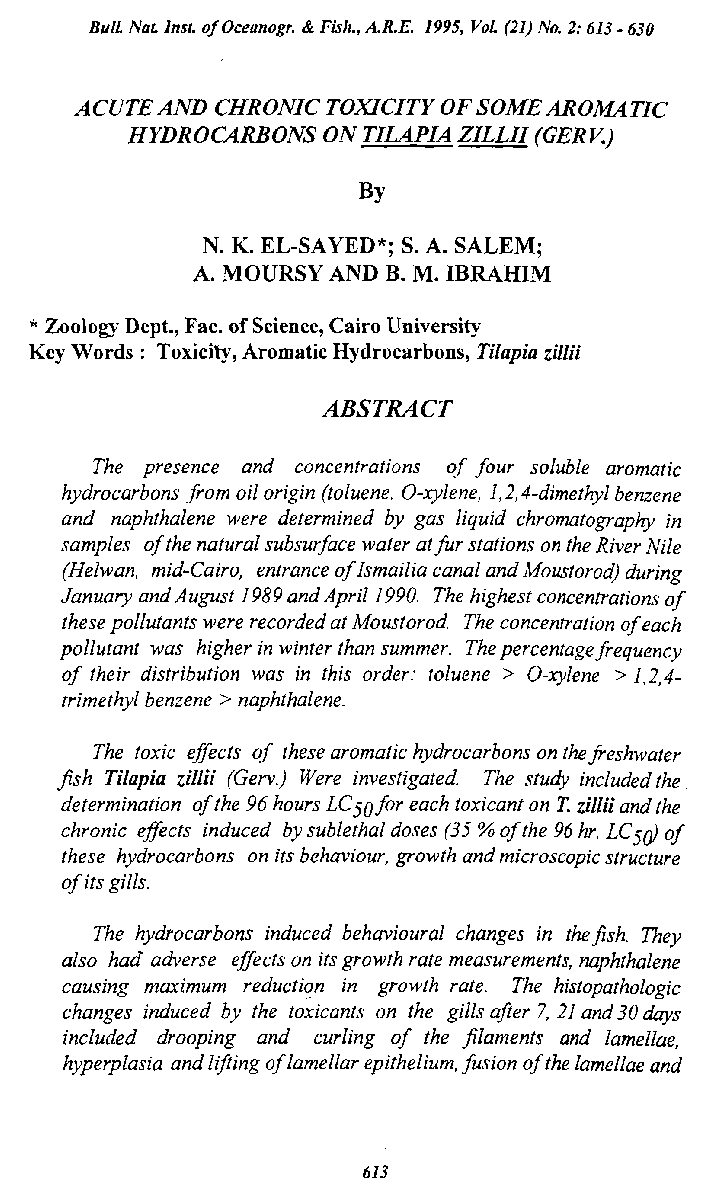Categories
vol-21ACUTE AND CHRONIC TOXICITY OF SOME AROMATIC
HYDROCARBONS ON TILAPIA ZILLII (GERv’)
By
N. K. EL-SAYED*; S. A. SALEM;
A. MOURSY AND B. M. IBRAHIM
* Zoology Dept., Fac. of Science, Cairo University
Key Words: Toxicity, Aromatic Hydrocarbons, Tilapia zUlii
ABSTRACT
The presence and concentrations of four soluble aromatic
hydrocarbons from oil origin (toluene. O-xylene, 1,2, 4-dimethyl benzene
and naphthalene were determined by gas liquid chromatography in
samples ofthe natural subsurface water atfur stations on the River Nile
(Helwan, mid-Cairo, entrance oflsmailia canal and Moustorod) during
January and August 1989 and April 1990. The highest concentrations of
these pollutants were recorded at Moustorod. The concentration ofeach
pollutant was higher in winter than summer. The percentage frequency
of their distribution was in this order: toluene > O-xylene > 1,2,4
trimethyl benzene > naphthalene.
The toxic effects of these aromatic hydrocarbons on the freshwater
fish Tilapia zillii (Gerv.) Were investigated. The study included the
determination ofthe 96 hours LC50for each toxicant on T. zillii and the
chronic effects induced by sublethal doses (35 % ofthe 96 hr. LC50J of
these hydrocarbons on its behaviour, growth and microscopic structure
ofits gills.
The hydrocarbons induced behavioural changes in the fish. They
also had adverse effects on its growth rate measurements, naphthalene
causing maximum reducticm in growth rate. The histopathologic
changes induced by the toxicants on the gills after 7, 21 and 30 days
included drooping and curling of the filaments and lamellae,
hyperplasia and lifting oflamellar epithelium, fusion ofthe lamellae and
6







